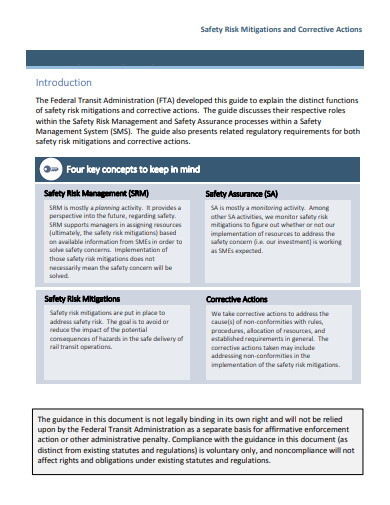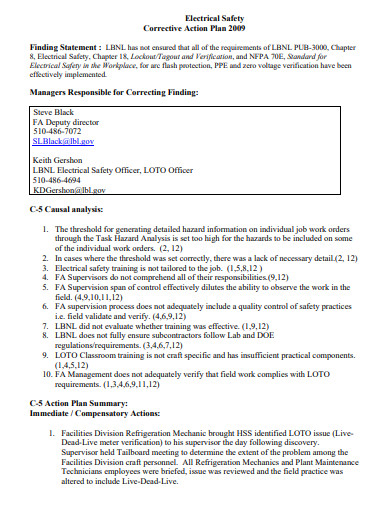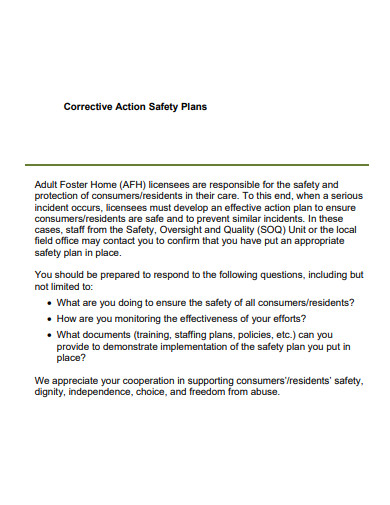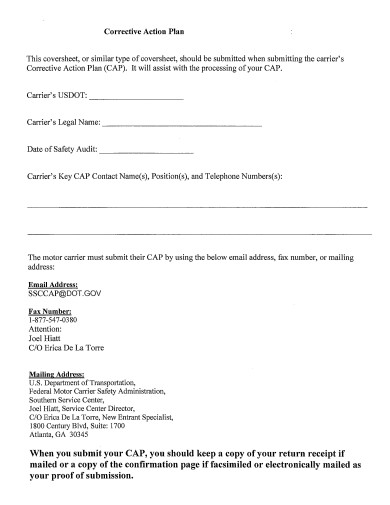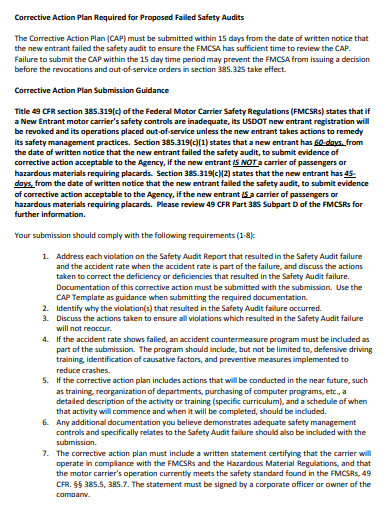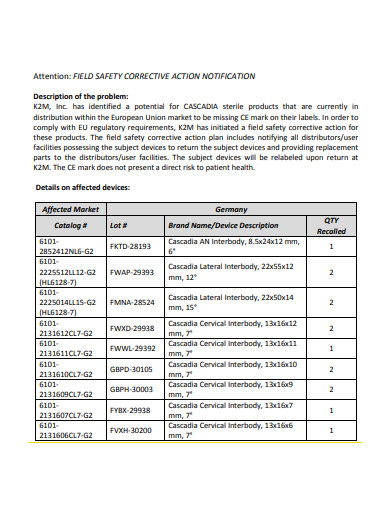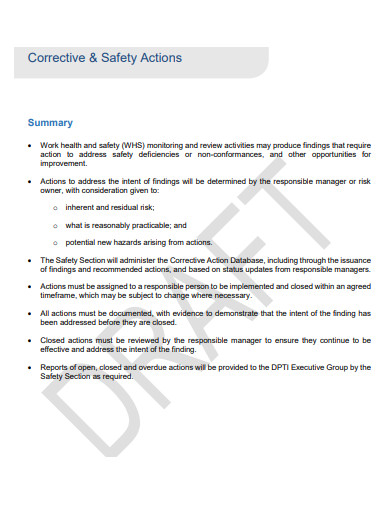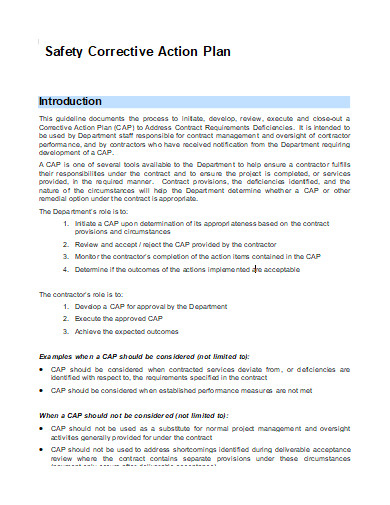It’s always important for a company to be able to create a layout or a comprehensive enough plan for the sake of their own tasks and projects. Being able to come up with a well laid out plan helps keep the management and the rest of the team on track for a lot of things that may be encountered during the entire duration of the project that they are doing. Planning ahead is always good business practice. Especially when you have a task that focuses on the health and safety of the entire workforce. The plan essentially highlights the necessary steps ahead of time to make sure that the intervention that is to be put in place works, and not waste resources on tasks that might not be effective at all. A well laid out corrective action plan brings the entire process altogether, effectively turning vision into actual tangible progress.
Planning ahead of time is always important because it can make or break the project that you are trying to do within your own company. It allows you and your project supervisors to provide pointers that your members can use to prepare ahead of time so that they can prepare for what they need to do or accomplish for the duration of the project. It helps make sure that everybody has all the time they need to be ready for whatever they might encounter, depending on the nature of the project that they are working on. As well as make sure that everybody can participate and take part in the activity, especially when it involves their own well being.
Writing an action plan may seem simple at first, but a lot of times that is not the case. Especially for corrective action plans, where the objective is to establish parameters and activities that promote the correct protocols within the company. Lower the possibility of the mistake being made again, and define accountability for breaches in said protocols. It really is a lot of responsibility within a single document. That is why the writing process requires a lot of attention to detail. To write your own effective corrective action plan, first check out these safety corrective action plan samples that we have listed for you down below. After getting yourself acquainted with the document and how it works, feel free to use these samples as guides and even as templates for when you decide to write a corrective action plan of your own.
10+ Safety Corrective Action Plan Samples
1. Safety Corrective Action Plan
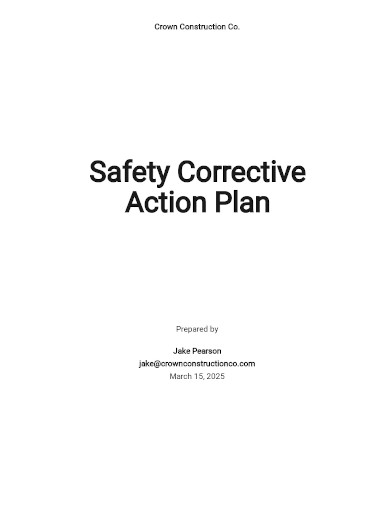
2. Food Safety Corrective Action Plan
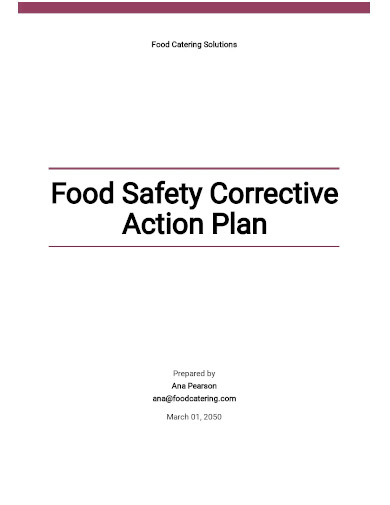
3. Safety Risk Mitigations and Corrective Action Plan
4. Electrical Safety Corrective Action Plan
5. Medical Device Safety Corrective Action Plan
6. Sample Safety Corrective Action Plan
7. Safety Audit Corrective Action Plan
8. Simple Safety Corrective Action Plan
9. Field Safety Corrective Action Plan
10. Formal Safety Corrective Action Plan
11. Printable Safety Corrective Action Plan
What Is a Safety Corrective Action Plan?
A corrective action plan is a document that contains the strategies, details, and the outline of the components and parameters that a company might plan to put in place for the overall project planning and project implementation. Regardless of the task’s shape, type, and size, when project supervisors want something that they are working on to succeed, then writing a corrective action plan is the best initial step that they can take. The document works like a checklist of sorts that lists the actions and the tasks that the members and the entire workforce of the management has to do and complete to reach the objectives that they have previously set. Action plans are composed of not more than a couple pages, but the length of the document generally depends on the nature and the scope of the project that your document will cover.
Safety corrective action plans tend to cover quite a bit, since they basically establish the parameters and the protocols that mitigate the health and safety hazards currently present in the work environment. The contents of the action plan needs to be presented with jut enough detail to make sure that the entire team and the rest of the company can figure out immediately what they need to do and follow to make the plan effective. Vagueness and unnecessary work jargons typically do not work in corrective action plans. And they would only cause more confusion rather than clarity. So it would really help to use a language that is plan and simple, something that everyone can easily understand and comprehend. The document itself doesn’t even have to be flashy nor colorful, just some well placed visuals that help alleviate the innate crudeness of the document can work wonders. Give it some much needed color and life. Action plans may not seem much, but it really helps in making sure that every protocol in place is reviewed and corrected, especially when it comes to the health and safety of the employee.
How to Write a Safety Corrective Action Plan
The process in writing a corrective action plan is more than jut writing down the steps on a piece of paper. You have to be clear with what your idea is and what your projected results are, and then have to explain that entire process to the rest of your organization to make sure that everyone who is working on the project with you knows exactly where you are heading. There are several steps that you need to follow and keep in mind to make sure that this is followed. These steps and components are listed and discussed in more detail right below.
1. Define your goal
Before you begin writing your corrective action plan, you need to think about what your goal is first. You need to have a complete grasp of your goals and the things that you want to achieve. Diving into a venture blindly without a proper plan and goal in mind will only set you and your team up for failure. Analyze the situation and the circumstances that you plan wo work with, and how your plan will work with the environment around it. Set SMART objectives to help screen your goals and see if they are actually feasible.
2. List down the steps
Enumerate the steps that you think are necessary to reach the goals that you have set. Don’t stress too much of the chronological order of the steps just yet. What’s important here is that you preemptively identify all the things that you need to do. Provide the details and the context to make sure that these tasks are done exactly the way that it is supposed be done.
3. Prioritize tasks and deadlines
After enumerating the tasks, now is the time to worry about the chronology of these steps. Organize them according to what needs to be done and completed first, and prioritize tasks that are both labor and resource intensive.
4. Set milestones
Having milestones along the way will greatly boost your team and your organization’s morale by giving them something to look forward to despite the completion date being still quite a ways away. Small victories accumulate over time, especially if you are making good progress. Celebrating these achievements along the way is also a way of patting yourself on the back once in a while.
5. Identify the resources that you need
Prepare your resources ahead of time, even before project development has actually begun. Gather all the resources and the supplies that you may need, it’s better to work with more that deal with supply shortages mid-development.
6. Visualize your plan
Aside from setting all these parameters in place, your action plan has to communicate the elements that you have identified early on. Present the contents of your plan like the risks, the tasks, chain of command, assignments, deadlines, and the entire inventory of your resources. Try to visualize you plan and see if the plan and the components within to see if its actually feasible or not.
7. Monitor, Evaluate, Update
The writing process of a corrective action plan does not stop when all of the components that you have identified are put into paper. The action plan needs to be updated and changed constantly depending on how the plan works over time.
FAQs
What is an appropriate corrective action?
Corrective action involves an entire process of communicating with your employees to improve several breaches and discrepancies within your own company, as well as making sure that it does not happen again.
What are the five steps of an action plan?
- Set SMART goals
- Create a list of actions
- Set a timeline
- Designate resources
- Monitor the progress
What are the five SMART objectives?
- Specific
- Measurable
- Achievable
- Realistic
- Timed
A well written action plan can go massive lengths for you and your action plan. It jut makes sure that the goals that you have identified and the entire vision itself has a good chance of being fulfilled and being realized. It helps in keeping things relatively smooth, albeit without any issues, nothing can work perfectly after all. But if problems do arise, then the entire organization are equipped with what they need to deal with said problem.
Related Posts
FREE 3+ Food Safety Audit Checklist Samples [ Internal ...
FREE 10+ Restaurant Safety Checklist Samples [ Food, Health, Fire ]
FREE 11+ Complaint Investigation Report Samples [ Market, Food ...
FREE 11+ Safety Audit Report Templates in PDF MS Word
FREE 7+ Sample Safety Manual Templates in MS Word PDF
FREE 9+ Machine Maintenance Checklist Samples [ Daily, Sewing ...
FREE 9+ Sample Employee Forms in PDF
FREE 11+ Sample Emergency Action Plan Templates in MS Word ...
FREE 10+ Facility Inspection Checklist Samples [ Medical, Safety ...
FREE 10+ Workshop Inspection Checklist Samples [ Safety, Self ...
FREE 44+ Sample Checklist Samples & Templates in Samples in ...
FREE 12+ School Improvement Plan Samples in MS Word PDF
FREE 12+ Effective Employee Management Strategy Samples ...
FREE 43+ Sample Plan Templates in MS Word PDF
FREE 4+ Kitchen Incident Report Samples in PDF DOC

